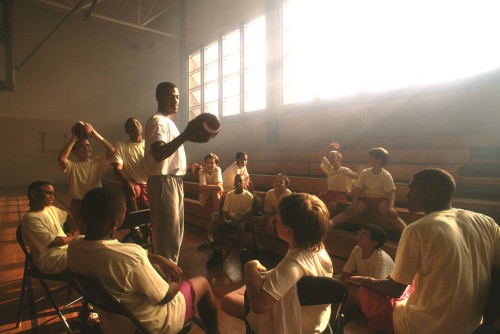I’ve been an advertising and corporate photographer for forty-eight years, and in that time, I’ve had my share of legal problems over the unauthorized use of my images. For some incredible reason, people think that they can just come and take my photos for their own use and not pay for them. Since I’ve spent the majority of these years in film, it was a constant issue, and one that was very hard to find out about.
I had to see my photo in a magazine, a brochure, on a billboard, or for a second on the television. The only other way was to have someone (usually another photographer) recognize my shot and call me to let me know. I once was sitting at a light and glanced over to a bench next to a bus stop and saw a photo that I knew a friend of mine had taken. I decided to call him and “lo and behold,” he knew nothing about it.
In my online class with the BPSOP, and in my “Stretching Your Frame of Mind Workshops” I conduct around the planet, I’m always telling my fellow photographers that putting a ‘C’ in a circle next to your name not fully protect it. People always think it does, but I have some bad news for you…it doesn’t. Your image has to be registered with the Library of Congress to even be able to sue for infringement. Not only does it have to be registered, but if it was not registered before the commencement of the infringement, you will be severely limited in how much you can recover from settlement or suit.
Because most infringements of photographs involve an advertising use – and it’s virtually impossible to prove the amount of profits “attributable to the (advertising) infringement” – if the image is not registered prior to the infringement, you can only recover the license fee you could have charged for the use in an “arms-length” transaction. Compare that recovery with what you can get if registered before infringement; statutory damages of up to $150,000 per work infringed plus attorneys’ fees, expert witness fees, court costs and interest.
I was teaching at the Julia Dean Workshop in Hollywood and made a comment on the size one of my students had embedded her name and copyright mark on her submission for review. It was too large and quite distracting. Another of my students asked me if I had ever heard of a company called Digimarc. I said I hadn’t so he proceeded to fill me in on what is proving to be one of the best pieces of advice ever given to me in my long career.
Digimarc offers a way to protect your image with an invisible embedded watermark;a very simple and subtle way to help identify infringers of your image. The real beauty about using Digimarc is that they will monitor your images by continuously searching the internet (worldwide} for any infringement of your copyright. For more information, you can click on the Digimarc logo seen on this blog. Btw, I receive no monetary compensation if you register. I do it as a professional courtesy to my fellow photographers.
For this post, I’ve called on my attorney to make a statement about his experience on Copyright issues. Dana LeJune is a Houston based lawyer who is one of the foremost authorities on the current issues involving copyright infringement. Here’s what he had to say:
“Copyright infringement in the areas of music, film, photography, and architecture is at an all-time high. Home builders are hiring draftsmen (usually, licensed architects won’t risk it) to redraw house plans, ad agencies are downloading images from Google, or scanning them from magazines, and teens are using file-sharing to pirate popular music every day, in every part of the country. Because litigating such a case can be very expensive for the copyright holder, the contingent fee arrangement may make prosecution affordable for the “little guy.”
Here’s what you need to understand: if the work was not registered before the infringement began, the potential recovery is often insufficient for the lawyer to pursue using the contingent fee arrangement. Without the ability to recover statutory damages and attorneys’ fees, and because of the likely inability to prove what profits were attributable to the infringement (in an advertising use), most lawyers will decline to accept the case.
The moral of the story is, REGISTER YOUR WORK REGULARLY. Photographers have a special prerogative to register their works, en masse, so there’s not a huge financial disincentive. Just make sure to list the name of each photo in the registration separately, even if on an attached list. This way the single registration for several hundred images will (probably) permit the recovery of multiple statutory damage awards for a single registration.
If you have any questions that are not answered by my website, www.copyrightsuit.net, I don’t charge for telephone consultations, so don’t hesitate to ask me a question. You may also email me at dlejune@triallawyers.net. Good luck and wealth for the rest of 2015 and 2016.”
That’s pretty sound advice, and it comes from someone that knows what he’s talking about. If you find that someone has used your photo without authorization and it was registered, calling my attorney would be an excellent idea. If it wasn’t registered, it wouldn’t be. Registering these days has been made as easy as it gets, and you can do it online with the Library of congress. There’s people that actually talk to you if need be.
Visit my website at: www.joebaraban.com and be sure tyo check out my 2016 workshop schedule at the top of this blog. come shoot with me sometime.
Keep sending in your photos and questions to: AskJoeB@gmail.com, and I’ll create a video critique for you.
JoeB





